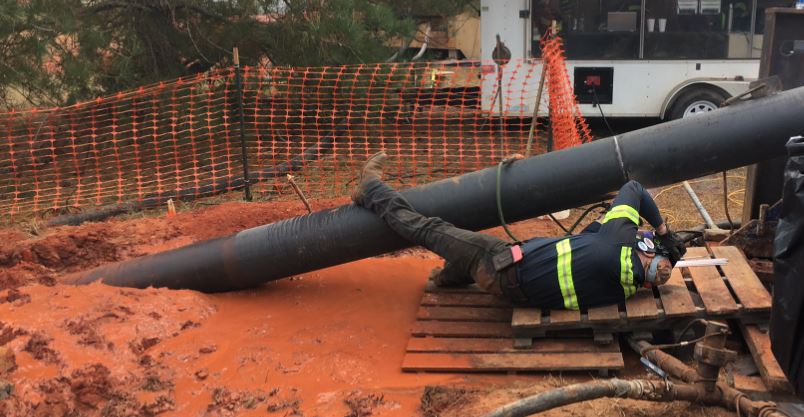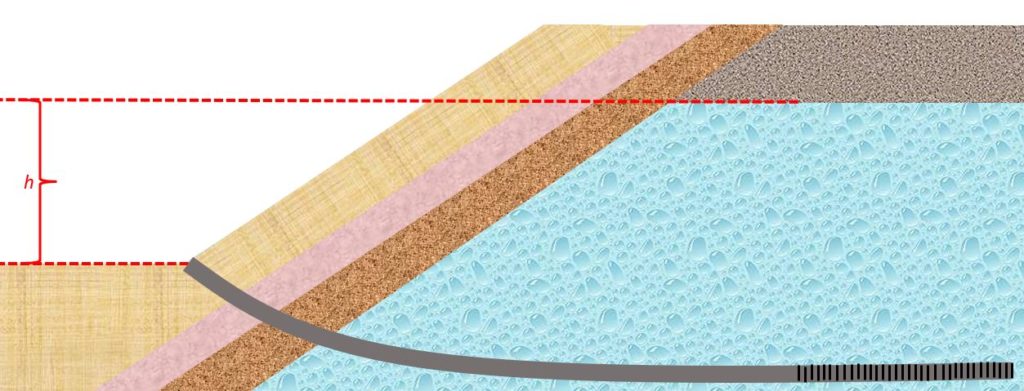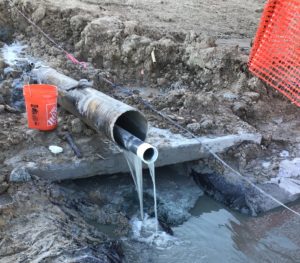Conductor Casing at an Angle – Part 2
Last month we shared a post about a project where our crews installed a horizontal gravity drain. The construction included a cemented conductor casing at the surface to mitigate uncontrolled flow in the borehole.

Welding 14″ diameter conductor casing at a 12-degree entry angle
Sometimes referred to colloquially as a “can”, a surface casing might serve one of many different functions:
Zone Isolation
In some applications, it might be used to isolate an aquifer or zone from the rest of the borehole. For example, when a remediation well penetrates a clean, shallow aquifer to access a deeper, contaminated aquifer. In some cases, regulations might require a conductor casing cemented in place to make absolutely sure the unimpacted zone is completely isolated.
Borehole Stability
Another use might include casing off an unstable formation such as loose cobbles or fill. A constantly collapsing or caving zone at the surface means endless headaches for the driller. A conductor casing can stabilize the otherwise unstable portion of the borehole. This allows access to the more easily drilled formations below.
Gravity Flow Control
Finally, as we discussed previously, a conductor casing helps mitigate uncontrolled flow in a gravity drain installation. When the potentiometric surface of the aquifer exceeds the well head elevation, the risk of uncontrolled flow might result.
A properly cemented casing confines flow to inside of the well casing, as opposed to the annular space of the bore. This limits the risk of scouring material around the well head, which could lead to instability (i.e. in an embankment of a tailings dam or a coal ash basin).

Factors to Consider When Specifying a Conductor Casing

A horizontal gravity drain installed through a surface casing.
In our previous post, we outlined why installing a conductor casing at a shallow entry angle is so much more challenging than in a “conventional” vertical orientation, so we won’t rehash that here.
It’s easy to throw around the idea of a conductor casing during abstract scoping conversations, and sometimes it truly is the best path forward. However, it’s important to confirm that the added cost and complexity are truly necessary.
For example, design limitations generally preclude curves in the portion of the bore profile that includes the conductor. This limitation might increase the amount of setback needed for an otherwise compact bore profile.
One especially unique challenge for HDD wells comes in the form of double-ended construction. Regardless of which application drives the decision, requiring conductor at both the entry and the exit side of a double-ended well, will drastically increase the cost and complexity of the installation process. Although technically feasible, fully cemented double-ended conductors are likely to prove cost prohibitive.
Tags: conductor casing, environmental HDD, environmental remediation, horizontal wells, surface casing